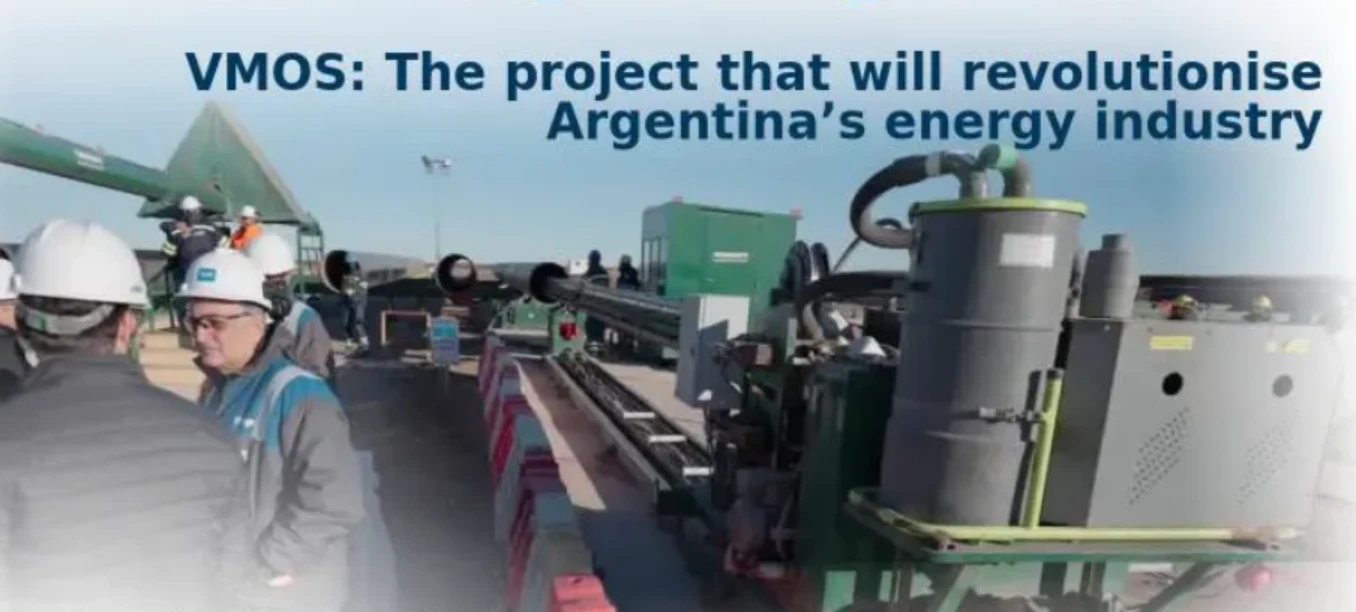VMOS: The project that will revolutionise Argentina’s energy industry
The construction of Vaca Muerta Oil System (VMOS) will be a 437-kilometre oil pipeline connecting Vaca Muerta fields, in the province of Neuquén with the port of Punta Colorada, located in the town of Sierra Grande, Río Negro.
With a total investment of 3 billion dollars, this project is positioned as the most significant private infrastructure project in recent decades in Argentina’s energy sector and a major step towards the future.
The pipeline, which will begin to operate in late 2026, will primarily transport oil from Vaca Muerta shale oil fields for export. The infrastructure project will not only alleviate logistical bottleneck but also strengthen Argentina’s position as a key player in the global oil market.
A strategic project for Argentina
VMOS project will have a direct impact on the future of Argentina’s energy industry and will improve connectivity between Vaca Muerta fields and the international market, promising to turn Argentina into a shale oil export hub.
It is estimated that, starting in 2027, the pipeline’s maximum transport capacity will be up to 700,000 barrels per day, with projected annual export revenues that could exceed $20 billion.
This ambitious project was carried out by a consortium composed of the country’s main oil companies, led by YPF, together with Vista, Pan American Energy, Pampa Energy, Chevron, Pluspetrol, Shell and Tecpetrol that have joined forces under the Large Investment Incentive Regime (RIGI).
This consortium will finance the project through a Project Finance scheme, with 70 % of the funds coming from international loans and the remaining 30 % contributed by the partners.
High impact infrastructure
VMOS will be more than just a pipeline; it will include a series of key facilities to ensure efficient and safe operation.
Highlights include storage tanks in Allen and Punta Colorada, the construction of three pumping stations, and an offshore system with monobuoys that will enable the loading of giant VLCC (Very Large Crude Carriers) vessels, which can transport large volumes of oil and play a crucial role in the export of crude oil to international markets.
One of the most notable features of the project is its scalability: as oil production in Vaca Muerta grows, so will the capacity of VMOS, with the possibility of increasing both storage tanks and pumping stations in the future.
The future of Vaca Muerta and its impact
The construction of VMOS will open a new stage for Vaca Muerta, the heart of Argentine shale oil. It is an essential project to boost the development of the basin and allow Argentina to achieve more fluid and efficient oil exports.
The project will not only generate export revenues but it will also attract international investment, consolidating Argentina as a strategic destination for the energy sector.
“VMOS is not only an infrastructure project, but a key element to strengthen our energy industry and to open new doors for the global export of our oil”, said Energy Minister Andrés Meler, during the project presentation.
With an initial transport capacity of 80,000 barrels per day, VMOS could generate up to $15 billion in annual revenue for the country once it becomes operational. This figure is expected to double by 2027, consolidating Argentina as one of the world’s major oil exporters.

